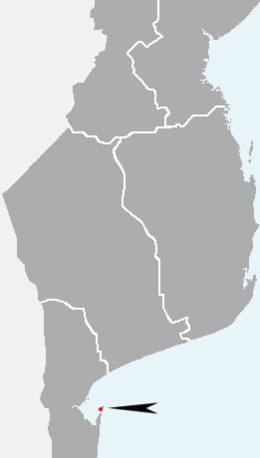
Whale watching is the practice of observing whales and dolphins (cetaceans) in their natural habitat. Whale watching is mostly a recreational activity, but it can also serve scientific and/or educational purposes. A study prepared for International Fund for Animal Welfare in 2009 estimated that 13 million people went whale watching globally in 2008. Whale watching generates $2.1 billion per annum in tourism revenue worldwide, employing around 13,000 workers. The size and rapid growth of the industry has led to complex and continuing debates with the whaling industry about the best use of whales as a natural resource.

Humpback dolphins are members of the genus Sousa. These dolphins are characterized by the conspicuous humps and elongated dorsal fins found on the backs of adults of the species. Humpback dolphins inhabit shallow nearshore waters along coastlines across Australia, Africa, and Asia. Their preference for these habitats exposes them to various human activities such as fisheries entanglement, boat traffic, pollution, and habitat loss. Despite these risks, their nearshore presence facilitates easy observation from land. There are four recognized species: the Indo-Pacific humpback dolphin, Indian Ocean humpback dolphin (S. plumbea), Atlantic humpback dolphin (S. teuszii), and Australian humpback dolphin (S. sahulensis). Although generally shy and less active compared to bottlenose dolphins, they are occasionally featured in dolphin watching tours, particularly in locations like Hong Kong and the Musandam Peninsula of Oman.
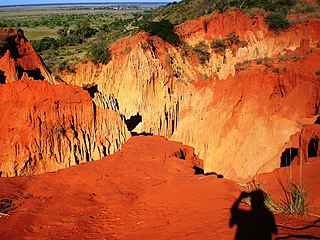
Maputo Province is a province of Mozambique; the province excludes the city of Maputo. The province has an area of 22,693 km2 (8,762 sq mi) and a population of 1,968,906. Its capital is the city of Matola.
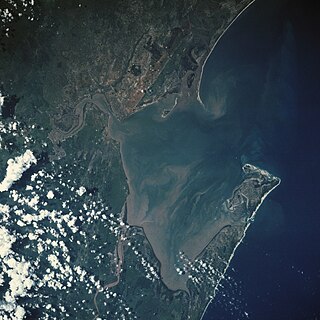
Maputo Bay, formerly also known as Delagoa Bay from Baía da Lagoa in Portuguese, is an inlet of the Indian Ocean on the coast of Mozambique, between 25° 40' and 26° 20' S, with a length from north to south of over 90 km long and 32 km wide.

The Bazaruto Archipelago is a group of six islands in Mozambique, near the mainland city of Vilankulo. It comprises the islands of Bazaruto, Benguerra, Magaruque, Banque, Santa Carolina and Shell. Nyati Island is located further south.

Marine National Park in the Gulf of Kutch is situated on the southern shore of the Gulf of Kutch in the Devbhumi Dwarka district of Gujarat state, India. In 1980, an area of 270 km2 from Okha to Jodiya was declared Marine Sanctuary. Later, in 1982, a core area of 110 km2 was declared Marine National Park under the provisions of the Wildlife (protection) Act, 1972 of India. There are 42 islands on the Jamnagar coast in the Marine National Park, most of them surrounded by reefs. The best-known island is Pirotan. The park protects two major ecosystems, corals and mangroves.

Inhaca is a settlement in Mozambique, on the subtropical Inhaca Island off the East African coast. Inhaca settlement is centered on a mission station located about 32 km east of Maputo.

The Mnazi Bay-Ruvuma Estuary Marine Park(MBREMP) was established on 1 July 2000 under Act No. 29 of 1994 of Marine Parks and Reserves of Tanzania.
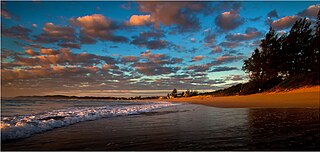
Maputo Protection Area is a marine protected area in Mozambique. It was established when the government of Mozambique proclaimed the area on the 14 July 2009 and declared the 678 square kilometres (262 sq mi) Marine Protected Area stretching from Ponta do Ouro in the south to the Maputo River Mouth in Maputo Bay in the north as a Marine Protected Area, the area stretches three nautical miles into sea.

The Bazaruto Archipelago National Park (BANP) is a protected area in the Inhambane Province of Mozambique on the Bazaruto Archipelago. The park was proclaimed on 25 May 1971. It is off the coast of the Vilanculos and Inhassoro districts, covering a large expanse of ocean and five islands.

Mohéli National Park is a national park in the Comoros. It includes marine, coastal, and terrestrial areas on and around the island of Mohéli. The park has an area of 643.62 km2. Established as Mohéli Marine Park on 19 April 2001, it was first protected area in the Comoros. It was redesignated a national park in 2010. In 2015 the park was expanded to include about three-quarters of Mohéli's terrestrial area. It is the southernmost territory of the southernmost Arabic-speaking country.
Thevenard Island is located approximately 22 kilometres (14 mi) off the coast of Onslow in the Pilbara region of Western Australia. The majority of the island and the waters around it are covered by the Thevenard Island Nature Reserve, which was declared in 1975 and has a size of 2,172 hectares.

Delagoa is a marine ecoregion along the eastern coast of Africa. It extends along the coast of Mozambique and South Africa from the Bazaruto Archipelago to Lake St. Lucia in South Africa in South Africa's Kwazulu-Natal province. It adjoins the Bight of Sofala/Swamp Coast ecoregion to the north, and the Natal ecoregion to the south. It has Africa's southernmost tropical coral reefs and mangrove forests. It is the southernmost Indo-Pacific ecoregion, marking the transition from the tropical Indo-Pacific to Temperate Southern Africa.
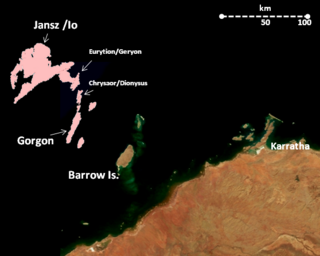
The Montebello Island Marine Park is located off the northwest coast of Western Australia, about 1,600 km north of Perth, and 120 km west of Dampier. The reserve includes the entire group of Montebello Islands.

